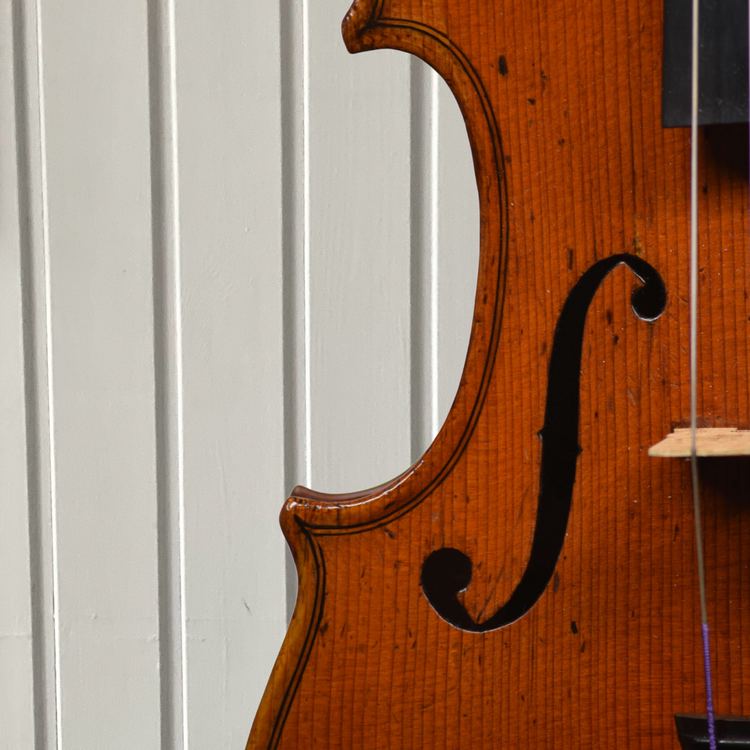String instruments are usually made according to a set of characteristics known as a model. A luthier might choose to use one of four primary models (Stradivari, Guarneri del Gesù, Amati or Stainer), to use a slightly more unusual model, or to strike out on their own using a personal model.
In order to identify the model, one of the features that we look at is the design of the f holes. Hopefully this guide might come in useful as a very brief look at the different f hole models commonly seen. These are fairly typical examples, taken from our current stock: however the variations on these designs are almost infinite!
This quick look at some different f hole models was originally published as a series of posts on our Instagram page. A lovely friend of ours recently suggested that we might put it here on our blog - hope it’s useful!
Stradivari model f hole
Here is an example of a classic Strad sound hole: the f hole is identifiable by its slightly square wings. This f hole is set at a slightly more slanted angle than many examples as it’s a copy of Stradivari’s 1716 violin known as the ‘Messiah’.

Guarneri ‘del Gesù’
We usually describe del Gesù model f holes as looking gothic! They usually have flared wings and look relatively aggressive in character. Occasionally, it can look as though the violin is slightly cross-eyed!

Amati
Amatese f holes are gorgeously graceful and have lovely tapered wings. The stems of the Amati f holes are more delicate than those of Stradivari model violins and they taper nicely towards the top and the bottom. There are no hard edges in f holes of this model.

Stainer
Stainer model f holes are probably the most curvaceous of all! The wings curve round much further than on other patterns and the stems are often set fairly upright. Overshadowed in Italy by the works of Stradivari, the Stainer model remained in favour in England and Germany well into the nineteenth century.

Alessandro Gagliano
These usually have large lower holes, with the bottom half of the f hole having a tendency to swing out to the side. We sometimes see instruments made on quite a personal model described as ‘after Alessandro Gagliano’.

Guadagnini
Finally, Guadagnini model f holes have slightly pear-shaped lower sound holes and are often set quite upright. The nicks are often found slightly below the centre point on this model.

We hope that this guide to some of the more common f hole designs has been useful. Remember, we offer free valuations in person if you would like some help with working out the model of your violin, viola or cello!